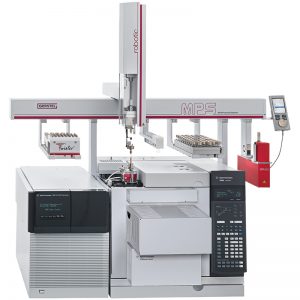Direct thermal extraction of solids has most commonly been used for qualitative identification of trace materials such as additives, impurities and residual monomer or solvents. The technique has many benefits including reduced matrix interference, eliminating solvent extractions, and significant improvements in detection limits relative to liquid extraction techniques.
Many types of solid materials are amenable to quantitative analysis using direct thermal extraction. Samples must be homogeneous, so that the small amount of material needed for thermal extraction is representative of the whole. Samples must be able to fit into the relatively small (4mm ID) thermal desorption tube. Diffusional distances in the solid must be minimized, and surface area maximized to facilitate recovery of analytes from the solid matrix. This can be accomplished for example, by reducing the sample to small particle size, or analysis of polymers as thin films.
Key extraction parameters that must be optimized include desorption temperature, time and flowrate. In addition, trapping conditions in the inlet used to refocus analytes prior to transfer to the column can be adjusted depending on the range of analytes present. Finally, for quantitation to be reliable the system must be calibrated using conditions similar to the thermal extraction conditions used for the sample.
Examples of optimized conditions for quantitation of residual hydrocarbons in polymeric packaging film and residual flavor components in recycled PET are shown. Techniques and equipment necessary for reliable calibration are also described.



